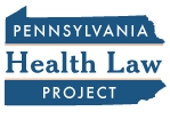CMS Shares Evaluation of Medicare-Medicaid Financial Alignment Efforts
In 2011 the Centers for Medicare & Medicaid Services launched a “Medicare-Medicaid Financial Alignment Initiative” that seeks “…to provide Medicare-Medicaid enrollees with a better care experience and to better align the financial incentives of the Medicare and Medicaid programs.”
 How is that initiative working so far? CMS recently released three reports that evaluate different aspects of the program. Those reports are:
How is that initiative working so far? CMS recently released three reports that evaluate different aspects of the program. Those reports are:
- “Early Findings on Care Coordination in Capitated Medicare-Medicaid Plans under the Financial Alignment Initiative”
- “Beneficiary Experience: Early Findings from Focus Groups with Enrollees Participating in the Financial Alignment Initiative”
- “Issue Brief: Special Populations Enrolled in Demonstrations under the Financial Alignment Initiative”
Pennsylvania’s private safety-net hospitals serve especially large numbers of dually eligible Medicare and Medicaid beneficiaries, so such programs are always of special interest to them.
In addition to viewing the reports, go here to learn more about the Medicare-Medicaid Financial Alignment Initiative.







 The Pennsylvania Health Law Project has published its November-December 2016 newsletter.
The Pennsylvania Health Law Project has published its November-December 2016 newsletter.